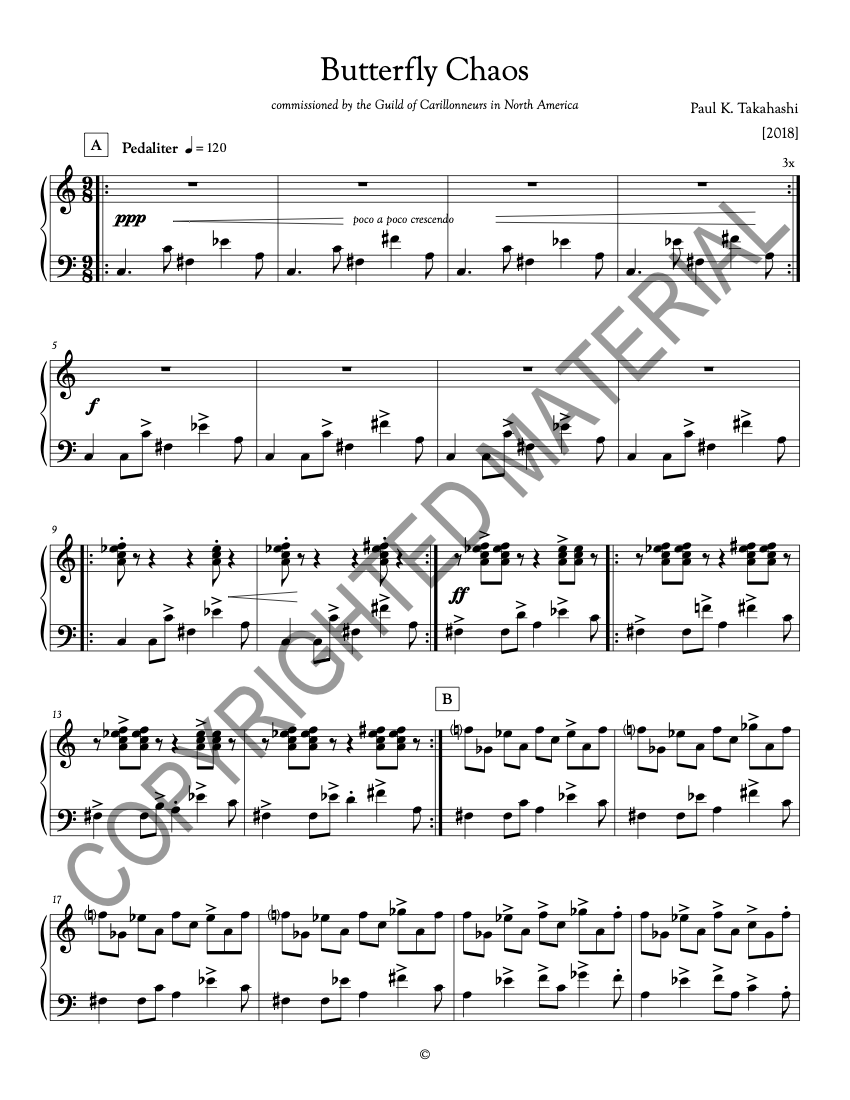
Butterfly Chaos
Commissioned by the Johan Franco Composition Fund of The Guild of Carillonneurs in North America
Program notes
Life expresses itself through organic systems that resemble language and through variation. All things alive communicate at various levels with surrounding elements, exchanging memories of past experiences and leaving traces of mutual influence.
What interests me in music is its organic nature that seems to function in exactly the same way as in other domains of life. Motifs and patterns travel and spread across borders, cultures and time, often in a subtle, invisible way. Like genetics, epigenetics and memes. The music I compose stems from the memories of my past experiences that have left traces, in my conscious, as well as subconscious and unconscious minds.
Having grown up at the crossroad of several often contradictory cultural and social patterns, my fascination for variation, especially linguistic and musical, developed at a very early age. I started learning music at age seven and learned several languages by myself from around the same age. Rhythmic and melodic patterns, as well as timbre and accents are some of the features that have caught my attention since then. Dialects, visual perception and musical styles became my passion and terrain for investigation and exploration. My experience with keyboard instruments—piano, organ, harpsichord, accordion, carillon...—but also with various other traditional instruments—the Turkish saz, the Russian balalaika, Korean percussions, ...—have contributed in expanding my vision and vocabulary.
In Butterfly Chaos, you can hear how heterogeneous rhythmic patterns combine and create an emerging consciousness of a new pattern, while melodic motifs display a variety of modal palettes, gliding from one mood to another. Musical language should be alive in the performer, so all fixed compositions are modular, so that the performers can free themselves from the written notes and start improvising in the dialect in which the composition has been set on paper and progressively expressing themselves in their own dialects. Each performance should be a new creation, an expression of each performer's emotional experience to be shared with fellow listeners.
—Paul K. Takahashi

![[PDF] Butterfly Chaos [PDF] Butterfly Chaos](https://d2j6dbq0eux0bg.cloudfront.net/images/9481258/4379316874.png)